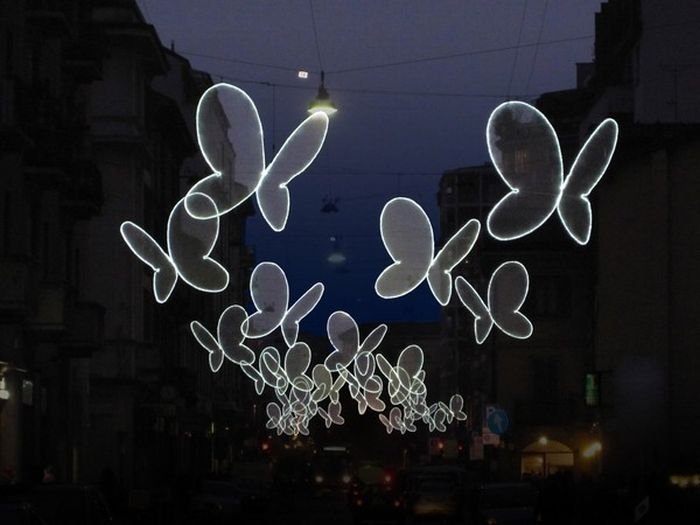|
|
Light Butterflies By Chiara Lampugnan
|
Light Butterflies by Chiara Lampugnani Design is an innovative project displayed in Paolo Sarpi Street and Canonica Street in Milan as part of the the Milan International Led Light Festival (held from 4 December 2010 until 10 January 2011). Inspired by the Butterflies Oasis based in Palestro Street in Milan, the light butterflies by Chiara Lampugnani are an homage to the beauty of Nature through the splendor and magic of light. A message to the city of Milan which is always in a hurry so that it may stop and think about the simple things of life through the eyes of a child. We salute this uncommon project and we consider it to be a great idea of urban regeneration that could be applied in different cities in order to bring streets and neighborhoods back to life.
A light-emitting diode (LED) is a semiconductor light source. LEDs are used as indicator lamps in many devices, and are increasingly used for lighting. Introduced as a practical electronic component in 1962, early LEDs emitted low-intensity red light, but modern versions are available across the visible, ultraviolet and infrared wavelengths, with very high brightness.
When a light-emitting diode is forward biased (switched on), electrons are able to recombine with electron holes within the device, releasing energy in the form of photons. This effect is called electroluminescence and the color of the light (corresponding to the energy of the photon) is determined by the energy gap of the semiconductor. An LED is often small in area (less than 1 mm2), and integrated optical components may be used to shape its radiation pattern. LEDs present many advantages over incandescent light sources including lower energy consumption, longer lifetime, improved robustness, smaller size, faster switching, and greater durability and reliability. LEDs powerful enough for room lighting are relatively expensive and require more precise current and heat management than compact fluorescent lamp sources of comparable output.
|
|









